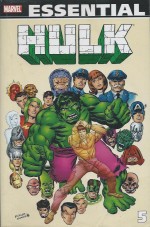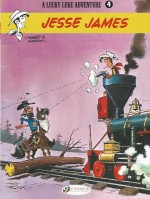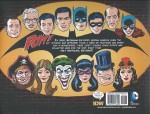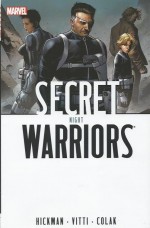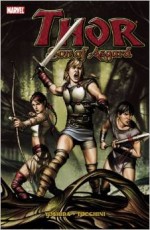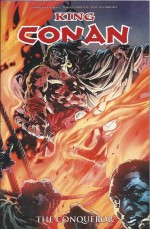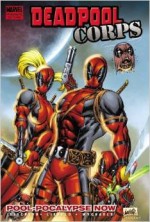
By Sean Michael Wilson & Hunt Emerson (New Internationalist)
ISBN: 978-1-78026-226-0
I don’t mind if you like Strictly Come Dancing. Why do you care that I don’t?
Faith is the ability to accept as true (believe in) things you can’t prove.
Belief is a choice to have faith (implicit trust) in certain things. Many people choose to believe Evolution doesn’t exist but that won’t protect them from a new strain of Bird Flu, rats that have developed immunity to Warfarin or even a Strep bug which has bred beyond the capabilities of contemporary antibiotics to kill it.
I choose to trust – call it “believe†if you want – in physically measurable, quantifiable, repeatable phenomena which work irrespective of what I want or how much I beg them to change.
I want to believe that I’m in no way socially, developmentally, biologically or genetically connected to racists, homophobes, abusers or cretins but, just like I wish I had superpowers, praying cannot make it true.
You can choose to think of evolution as open to debate and refuse to believe you’re descended from an unending chain of constantly changing and developing animals, but that only makes you more a horse’s arse than a monkey’s uncle.
The comforting notion that any book or unverifiable opinion is infallible and that you are of more significance to the universe than a bee, a rock or a bad odour is equally wrong – and completely pointless too: but if a sense of superiority helps you sleep at night, fine. Just stop killing bees, crushing rocks and making a nasty smell for the rest of us – and don’t even get me started on the kinds of monsters and morons who think their beliefs afford them the right to inflict institutionalised cruelty upon animals or their own children and justifies desecrating art and destroying artefacts of history – whether it be Christians painting over erotic murals at Herculaneum and Pompeii or fanatical Islamic splinter groups pillaging and destroying temples in Afghanistan, Syria and Iraq…
I believe know that the above statement was a rant – but a heartfelt and honest one.
I choose to rant and shout and shoot off my mouth because I’m not smart, patient or reasonable, unlike author Sean Michael Wilson and grand master cartoonist Hunt Emerson who have diligently gathered data, arguments, opinions and those pesky imps we call “facts†into a superbly even-handed and open-minded graphic narrative discourse.
Taking up the most commonly employed arguments of Big Religion, Wilson & Emerson have carefully arranged and scrupulously countered them, resulting in a plausibly inviting examination of issues dividing Faiths (all of them, not any one faction who might prefer to and profit from thinking of themselves as persecuted intellectual “martyrsâ€) from the world as it appears to the rest of us and shining a warm yet uncompromising light of rationality upon them.
It makes for gripping and genuinely revelatory reading.
All religious organisation and faith workers – from the Catholic Church to TV ghost hunters to that shoddy charlatan medium/spiritualist conning your aunty out of her pension – derive approval, power and money from their highly organised activities, but whereas we officially godless individuals may sell a book or two and cop an appearance fee from the occasional chat show, Humanists (people who don’t believe in God and generally can’t even agree with each other) gain nothing from pointing out that – based on the evidence – we are on our own in the world and bear the sole responsibility for taking care of the place and all its inhabitants and fittings.
That’s something to sincerely meditate on…
Following an Introduction by Professor Lawrence M. Krauss (Director of the Origins Project at Arizona State University), the dissection of Big Questions and how people choose to react to them opens with Part 1: Evolution and Creationism wherein the ground rules of serious discussion are laid down before ‘Creationism v Evolution’ systematically lists and methodically shoots down one by one the major claims used to “disprove†and cast doubt on the nature of reality, beginning of course, with a clear concise definition of the terms of reference of each side…
A quick précis of the development of Darwin’s discoveries and principles is compared with Christian Creationism’s contention that the world is significantly less than 10,000 years old. Outrageous things many Americans believe are counterbalanced by helpful facts from Richy Thompson of the British Humanist Association before a number of Creationist claims such as Earth’s declining magnetic field, slowing rotation and that all humanity and attendant life came from a survivors of a global flood 4,000 years ago are dealt with…
A hilarious aside explaining just why such fallacious arguments are harmful leads into a skilful dissection of “Intelligent Design†with helpful interjections and clarifications from Philosophy Lecturer Stephen Law with other cognitive heavyweights such as Richard Dawkins, Christopher Hitchens and Noam Chomsky piling in to explain why such notions are so harmful to children.
Following a lecture on the damage the proliferation of such propaganda has had on American education and government policy, Richy Thompson pops back to expose the situation in British schools before going on to deliver his own description of the difference between Belief and Fact. The section then ends with a description of the gloriously wry scientific response to Creationism that is Project Steve…
This is followed by a review of the wider universe (as we understand it at this moment, and Creationists never will) and concludes with a detailed examination of Law’s Eight Mechanisms, by which all religions – and a goodly proportion of New Age Tomfoolery – introduce, promote and promulgate their particular brand of Revelation and Salvation.
Part 2: Science and Religion then expands the discussion into a broader examination of the debate, pictured as the sporting contest ‘Science v Religion’ and running down the inherent fallacies manipulated by theistic proponents.
Historical examples and contemporary scenes are followed by definitions of Humanism from the likes of Albert Einstein, Albert Schweitzer, Isaac Asimov, Gloria Steinem and Kurt Vonnegut as well as AC Grayling, Hitchens and the wonderful Dawkins who offers his own joyous antidote to slavish acceptance of other peoples’ unproven opinions as well as few much-needed debunkings of such religious Whited Sepulchres as the obnoxious contention that people cannot be moral or “good†without God (seen in ‘Darwin = Facism’).
There’s mention of the Catholic Church’s connections to many tyrants and arguments pointing religion’s role in the rise of Hitler, Stalin and too many others…
Also including a gallery of prominent Humanists from John Stuart Mill to Katherine Hepburn and a delicious selection of pertinent and elucidating jokes from Hitchens, this section concludes with lawyer and Democrat politician Sean Faircloth’s ’10 Practical Points for a Secular America’…
This appetisingly sensible treatise also includes essays on both The American Humanist Association (“Good Without a Godâ€) and The British Humanist Association (“For the one life we haveâ€) offering general glimmerings of good tidings for common sense as well as Bios and contact details of the creators.
Any “fact†that comes with a price ticket and pledge of allegiance isn’t worth knowing and sometimes it’s hard to see any space for compromise in this argument, but Goodbye God? is not bloodymindedness in action or the theological equivalent of bear-baiting.
The purpose of this book and the only thing most Humanists want is simple. We’re not telling anyone what to believe or how to act: all we want is to teach nothing but science and scientific principles in science classes.
It would be nice if political and social decisions that affect all humanity were made solely on the basis of rational exploration and logical conclusion, but we’ll settle for giving the next generation all the intellectual tools needed to deal with the increasingly unforgiving and extremely inhospitable planet we’re leaving them rather than blinkering them and having everybody wait for a miracle which will not be forthcoming…
By all means keep your Intelligent Design or Creation Myths if you need them so badly but present them in Religious and Social Studies classes where they belong and where, quite frankly, they can be examined and debated on their own merits and contrasted with other equally baseless suppositions, rather than unquestioningly delivered to developing minds with the same unshakable conviction and intensity which correctly states “fire hotâ€, “stuff falls to ground when let go ofâ€. You could even hopefully add “some people and animals only want sex within their own gender†and “climate change is real and is going to kill us allâ€â€¦
If only the rationalists weren’t so patently “preaching to the converted†too…
But don’t you dare take my word for it: examine the book for yourselves and draw your own conclusions…
© Sean Michael Wilson. All rights reserved.

